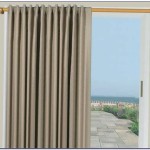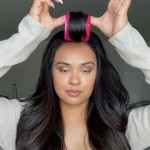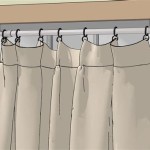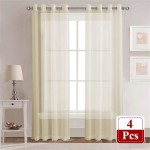Shower Curtains: Essential Bathroom Fixtures
Shower curtains serve as a functional and decorative element in bathrooms, providing privacy, containment of water, and aesthetic enhancement. They are typically suspended from a rod placed at the shower or bathtub opening, creating a barrier between the showering area and the rest of the bathroom. The vast array of materials, designs, and sizes available ensures compatibility with diverse bathroom styles and individual preferences.
The primary purpose of a shower curtain is to prevent water from splashing outside the designated shower or bathtub area. This function minimizes the risk of slippery floors, potential water damage to bathroom fixtures and flooring, and the inconvenience of post-shower cleanup. Beyond water containment, shower curtains afford privacy to the occupant during showering or bathing. This is particularly important in shared living spaces or bathrooms with large windows.
Furthermore, shower curtains contribute significantly to the overall aesthetic of the bathroom. They present an opportunity to introduce color, pattern, and texture, thereby complementing or contrasting with the existing décor. A well-chosen shower curtain can transform a simple bathroom into a visually appealing and personalized space.
The selection of a suitable shower curtain involves consideration of several factors, including the material, size, design, and ease of maintenance. Each of these aspects plays a crucial role in ensuring the curtain's effectiveness and longevity.
Material Considerations for Shower Curtains
Shower curtains are manufactured from a variety of materials, each possessing distinct characteristics that influence their performance and durability. Common materials include fabric, vinyl, and PEVA (polyethylene vinyl acetate).
Fabric shower curtains are typically made from cotton, polyester, or blends of both. Cotton curtains offer a soft, natural look and feel but are generally less water-resistant than synthetic options. They require a separate shower curtain liner to effectively repel water. Polyester curtains are more water-resistant and durable than cotton, making them a popular choice. Fabric curtains can be machine-washed, simplifying maintenance.
Vinyl shower curtains are constructed from PVC (polyvinyl chloride) and are known for their excellent water resistance and affordability. However, vinyl can emit volatile organic compounds (VOCs), which may be a concern for individuals with sensitivities. While some newer vinyl curtains address this by minimizing VOC content, ventilation remains important. Vinyl is easy to clean; it can usually be wiped down with a damp cloth.
PEVA shower curtains are considered a more environmentally friendly alternative to vinyl. PEVA is a non-chlorinated vinyl that releases fewer VOCs. It offers similar water resistance and durability to vinyl but is generally more expensive. Like vinyl, PEVA curtains are easily cleaned with a damp cloth.
The choice of material should be based on a balance of factors, including cost, water resistance, durability, environmental concerns, and aesthetic preferences.
Determining the Appropriate Size and Dimensions
Accurate measurement of the shower or bathtub area is essential for selecting a shower curtain of the correct size. The curtain must be wide enough to fully cover the opening and long enough to prevent water from escaping without dragging excessively on the floor.
Standard shower curtains typically measure 72 inches in width and 72 inches in length. This size is suitable for most standard bathtubs and shower stalls. However, variations exist to accommodate different configurations.
For extra-wide shower stalls or bathtubs, wider shower curtains are available. These may measure 108 inches or more in width. Similarly, extra-long shower curtains are designed for bathrooms with high ceilings or custom shower installations. These may measure 84 inches or even 96 inches in length.
When measuring for a shower curtain, it is important to consider the position of the shower curtain rod. The height of the rod will influence the required length of the curtain. Ideally, the bottom of the curtain should hang approximately one inch above the floor to prevent mildew growth and excessive wear and tear.
Beyond the curtain itself, consideration should be given to the shower curtain liner. If a liner is used, it should be slightly shorter than the curtain to prevent it from being visible below the curtain's hem.
Design and Aesthetic Considerations
Shower curtains offer a diverse range of design options, allowing for customization of the bathroom's visual appeal. Colors, patterns, textures, and embellishments contribute to the overall aesthetic and can be chosen to complement or contrast with existing décor.
Solid-colored shower curtains provide a clean and minimalist look. They can be used to create a calming atmosphere or to serve as a neutral backdrop for other decorative elements in the bathroom. A wide range of colors is available, allowing for coordination with wall colors, flooring, and accessories.
Patterned shower curtains introduce visual interest and can be used to create a focal point in the bathroom. Patterns range from geometric designs to floral motifs to abstract art. The choice of pattern should be based on individual preferences and the overall style of the bathroom.
Textured shower curtains add depth and dimension to the space. Textures can be achieved through various techniques, such as weaving, embossing, or the addition of decorative elements. Textured curtains can create a more luxurious and tactile experience.
The design of the shower curtain should also consider the existing lighting in the bathroom. Dark colors can absorb light and make the space feel smaller, while light colors can reflect light and create a brighter, more open atmosphere. The pattern and texture of the curtain can also influence how light is dispersed throughout the room.
Details such as grommets and hooks contribute to the overall aesthetic. Grommets come in a variety of finishes, including metal, plastic, and ceramic, and can be chosen to complement the curtain's design. Hooks can be simple and functional or decorative and ornate, depending on the desired look.
Beyond traditional design elements, some shower curtains feature unique embellishments, such as ruffles, embroidery, or appliques. These additions can add a touch of personality and whimsy to the bathroom.
Ultimately, the design of the shower curtain should reflect individual style and create a cohesive and visually pleasing environment within the bathroom.
Maintenance and Cleaning Practices
Regular maintenance and cleaning are essential for maintaining the cleanliness and longevity of shower curtains. The frequency and method of cleaning will depend on the material of the curtain and the severity of staining or mildew growth.
Fabric shower curtains can typically be machine-washed on a gentle cycle with mild detergent. It is recommended to wash the curtain separately from other items to prevent damage. After washing, the curtain should be hung to dry or tumble-dried on a low setting. Ironing may be necessary to remove wrinkles.
Vinyl and PEVA shower curtains can be cleaned by wiping them down with a damp cloth or sponge. A mild detergent or bathroom cleaner can be used to remove stubborn stains. It is important to rinse the curtain thoroughly after cleaning to remove any residue.
Mildew growth is a common problem with shower curtains, particularly in humid environments. To prevent mildew, it is important to ensure adequate ventilation in the bathroom. Opening a window or turning on the exhaust fan after showering can help to dry the curtain quickly.
If mildew does develop, it can be removed with a solution of bleach and water. Mix one part bleach with three parts water and apply the solution to the affected areas. Allow the solution to sit for a few minutes before rinsing thoroughly with water. It is important to wear gloves and eye protection when using bleach.
Alternatively, a solution of vinegar and water can be used to remove mildew. Vinegar is a natural disinfectant and deodorizer. Mix equal parts vinegar and water and apply the solution to the affected areas. Allow the solution to sit for a few minutes before rinsing thoroughly with water.
In addition to regular cleaning, it is recommended to replace shower curtains periodically, particularly if they become heavily stained or damaged. Replacing the curtain can help to maintain a clean and hygienic bathroom environment.
The choice of cleaning products should be based on the material of the curtain and the severity of the staining or mildew growth. Always follow the manufacturer's instructions for cleaning and maintenance.
Shower Curtain Liners: An Important Component
Shower curtain liners are essential accessories that provide an additional layer of protection against water damage. They are typically made of waterproof materials and are hung behind the shower curtain. Liners prevent water from seeping through the curtain and damaging the wall or floor.
Liners come in various materials, including vinyl, PEVA, and fabric. The choice of material is similar to that considered for the main shower curtain, with considerations for water resistance, environmental impact, and durability playing a role.
Vinyl liners are inexpensive and highly water-resistant but may contain VOCs. PEVA liners are a more environmentally friendly option with lower VOC emissions. Fabric liners offer a softer feel and can be machine-washed, but they require a waterproof coating to effectively repel water.
Liners are easy to install and maintain. They typically have grommets at the top that align with the grommets on the shower curtain, allowing them to be hung together on the same hooks or rings. Regular cleaning of the liner is important to prevent mildew growth. This can be done by wiping it down with a damp cloth or soaking it in a solution of bleach and water.
The use of a shower curtain liner significantly extends the life of the shower curtain by protecting it from excessive moisture and stains. It also provides an extra layer of privacy and insulation.
Replacing the liner periodically is recommended to maintain hygiene and prevent mildew buildup. A clean liner contributes to a cleaner and healthier bathroom environment.

Rustic Daisy Shower Curtains Blue Brown Floral Farmhouse For Bathroom Spring Country Botanical Curtain Sets Waterproof Fabric Decor Wal Com

The 8 Best Shower Curtains Of 2024 Reviews By Wirecutter

Sea Turtle Shower Curtain Bathroom Waterproof Etsy Curtains Unique Bathtub Decor
Best Shower Curtains In 2024

77 Shower Curtain Inspiration Ideas Bathroom Design Decor

The 8 Best Shower Curtains Of 2024 Reviews By Wirecutter

How To Choose Shower Curtains For Your Bathroom

Charlotte Shower Curtain

The 8 Best Shower Curtains Of 2024 Reviews By Wirecutter

14 Best Shower Curtains Of 2024 Top Picks








